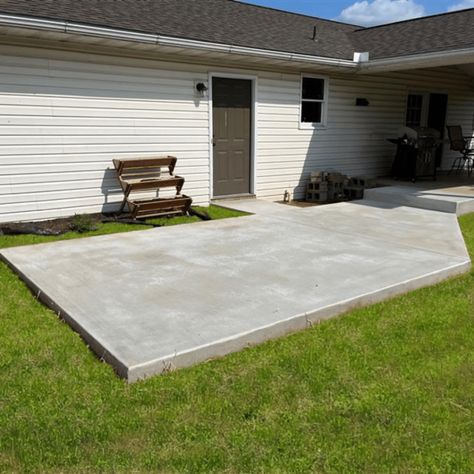What Are the Key Steps to Pouring a Concrete Slab?
A: Pouring a concrete slab involves six main phases:
- Planning & Preparation (permits, measurements, materials)
- Site Excavation & Base Setup (digging, gravel, compaction)
- Building Forms (wooden framing for slab shape)
- Pouring & Finishing Concrete (leveling, smoothing, edging)
- Curing (keeping concrete moist for strength)
- Final Inspection & Form Removal (checking for cracks, cleaning up)
Each step must be done carefully—once concrete is poured, there’s no turning back!
How Do I Prepare the Ground for a Concrete Slab?
A: Proper ground prep prevents cracking and settling. Follow these steps:
- Mark the area with stakes and string.
- Excavate 7–8 inches deep (4″ for concrete + 3–4″ for gravel).
- Add and compact gravel (use a plate compactor for stability).
- Slope the base (¼” per foot for drainage).
- Lay a vapor barrier (6-mil plastic for indoor/heated slabs).
Pro Tip: Call 811 before digging to check for buried utilities!
How Thick Should a Concrete Slab Be?
A: Thickness depends on use:
- Driveways & Garages: 4–6 inches (with rebar)
- Patios & Walkways: 3–4 inches
- Sheds & Light Structures: 4 inches (with gravel base)
Exception: If freezing temps are common, add air-entrained concrete to prevent cracking.
Do I Need Rebar or Wire Mesh?
A: Reinforcement prevents cracks and adds strength:
- Rebar (#3 or #4): Best for heavy loads (driveways, garages).
- Wire Mesh: Good for patios and sidewalks.
- No reinforcement? Only for very small, non-load-bearing slabs.
Pro Tip: Elevate rebar with chairs so it sits in the middle of the slab.
How Do I Build Strong Concrete Forms?
A: Use 2×4 or 2×6 lumber and follow these steps:
- Cut boards longer than needed (for overlapping).
- Stake every 2 feet to prevent bowing.
- Add diagonal kickers for extra support.
- Check for level & square (measure diagonals).
Warning: Weak forms can burst under concrete pressure!
What’s the Best Concrete Mix for a Slab?
A: Choose based on project needs:
- QUIKRETE 5000: High strength (garages, driveways).
- Crack-Resistant Mix: Less shrinkage (patios, walkways).
- Standard Mix: General use (sheds, small slabs).
For large slabs, order ready-mix concrete (3,000–4,000 PSI).
How Do I Pour and Finish Concrete Correctly?
A: Follow these steps for a smooth finish:
- Pour in layers, keeping concrete 2–3″ above forms.
- Screed with a 2×4 (sawing motion to level).
- Float with a bull float (push up, pull back).
- Edge sides (round edges prevent chipping).
- Cut control joints (every 8–10 feet for 4″ slabs).
- Final finish:
- Broom finish (outdoor traction).
- Steel trowel (smooth indoor finish).
Pro Tip: Wait until bleed water evaporates before final troweling.
How Long Does Concrete Take to Cure?
A: Curing times vary:
- 24–48 hours: Light foot traffic.
- 7 days: Moderate use (furniture, bikes).
- 28 days: Full strength (cars, heavy loads).
Curing Methods:
Wet curing (mist with water for 5–7 days).
Cure & Seal spray (locks in moisture).
Never let concrete dry too fast—it weakens the slab!
What Are Common Concrete Slab Mistakes?
A: Avoid these costly errors:
Too much water in mix → Weak concrete.
No gravel base → Cracks from settling.
Skipping control joints → Random cracks.
Pouring in extreme weather → Fast/slow curing.
Overworking the surface → Weak top layer.
Pro Fix: If cracks form, fill with concrete crack sealer.
Should I DIY or Hire a Pro?
A: DIY if:
Small slab (under 100 sq. ft).
You have helpers.
You rent proper tools (mixer, compactor).
Hire a pro if:
Large project (driveway, garage).
No experience with concrete.
Complex slopes/reinforcement needed.
Cost Comparison:
- DIY: $4–$8/sq. ft (bagged mix).
- Pro: $6–$12/sq. ft (ready-mix truck).

